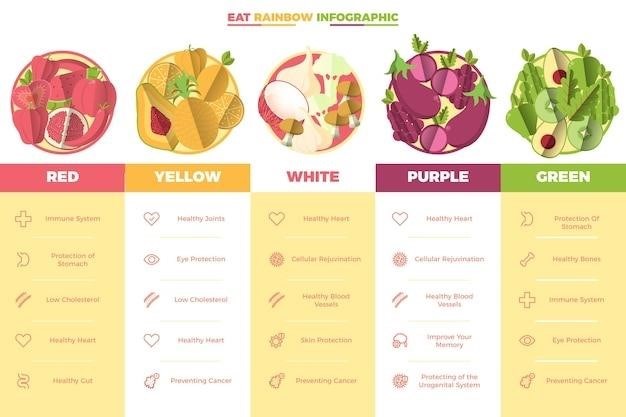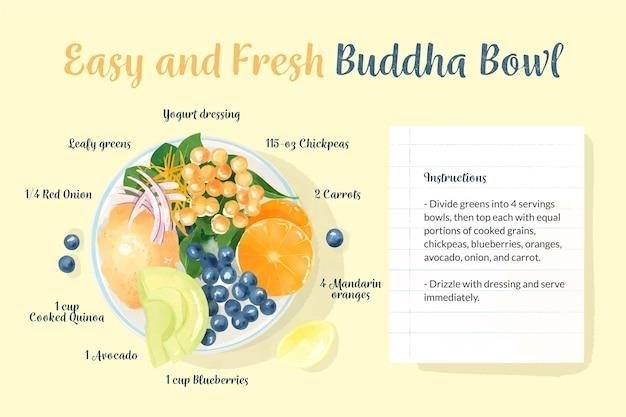High-Protein, Low-Carb Vegetarian Diet Plan
A high-protein, low-carb vegetarian diet plan is a dietary approach that emphasizes protein-rich vegetarian foods while limiting carbohydrates. This plan can be beneficial for those seeking weight loss, improved blood sugar control, or enhanced satiety.
Introduction
A high-protein, low-carb vegetarian diet plan is a popular dietary approach that combines the benefits of a vegetarian lifestyle with a focus on protein and low-carb intake. This type of diet emphasizes protein-rich vegetarian foods such as legumes, tofu, tempeh, nuts, and seeds while limiting carbohydrates from starchy sources like rice, pasta, and bread. This plan can be a healthy and satisfying way to manage weight, improve blood sugar control, and enhance overall well-being. It’s important to consult with a healthcare professional or registered dietitian before starting any new diet, especially if you have underlying medical conditions.
Why Choose a High-Protein, Low-Carb Vegetarian Diet?
There are several compelling reasons to consider a high-protein, low-carb vegetarian diet. Firstly, it can be a healthy and effective way to manage weight. By reducing carbohydrates and increasing protein intake, you can feel fuller for longer, reducing cravings and promoting weight loss. Secondly, this diet can help improve blood sugar control, making it beneficial for individuals with diabetes or those at risk of developing the condition. By limiting starchy carbohydrates, you can help stabilize blood sugar levels and improve insulin sensitivity. Additionally, a high-protein, low-carb vegetarian diet can enhance satiety, keeping you feeling satisfied and reducing the risk of overeating. This approach can also be a compassionate and sustainable way to enjoy a delicious and varied diet.
Benefits of a High-Protein, Low-Carb Vegetarian Diet
A high-protein, low-carb vegetarian diet offers numerous benefits for your health and well-being. It can help you achieve and maintain a healthy weight by promoting satiety and reducing cravings. This diet can also improve blood sugar control by stabilizing blood sugar levels and enhancing insulin sensitivity. Additionally, it can boost energy levels and reduce fatigue, as protein is essential for building and repairing tissues. By increasing your intake of fruits, vegetables, and legumes, you’ll also be consuming a wide range of vitamins, minerals, and antioxidants, supporting overall health and disease prevention. Moreover, this diet can improve heart health by reducing cholesterol levels and lowering blood pressure. It can also aid in muscle building and recovery, particularly for those engaging in regular exercise.
Potential Risks and Considerations
While a high-protein, low-carb vegetarian diet can be beneficial, it’s crucial to be aware of potential risks and considerations. One concern is the potential for nutrient deficiencies, particularly vitamin B12, which is mainly found in animal products. It’s essential to ensure you are consuming adequate amounts of vitamin B12 through fortified foods or supplements. Another risk is the possibility of digestive discomfort, as a sudden increase in protein and fiber can lead to bloating, gas, and constipation. It’s important to gradually increase your protein intake and ensure you are consuming enough fiber-rich foods to prevent these issues. Additionally, this diet can be challenging to maintain long-term, as it requires careful planning and preparation. It’s essential to consult with a healthcare professional or registered dietitian to ensure it aligns with your individual needs and health goals.
Sample Meal Plan
This sample meal plan provides a framework for a high-protein, low-carb vegetarian diet, featuring balanced and delicious meals.
Day 1
Start your day with a hearty breakfast of 1/4 cup uncooked muesli cereal, 1 cup unsweetened soymilk, a pinch of ground cinnamon, and 1/2 cup frozen mixed berries. For lunch, enjoy a satisfying salad featuring 1 cup couscous, 1.5 tbsp olive oil, 1 green onion, 1 clove garlic, 2 sprigs of fresh mint, 3 sprigs of fresh parsley, 1 tbsp water, 1 tbsp lemon juice, salt, and pepper to taste. Dinner offers a flavorful and nutritious eggplant and zucchini dish with canned tomatoes, tomato sauce, agave, basil, oregano, and thyme.
Day 2
Begin your day with a protein-packed breakfast of 1/2 cup oatmeal, 1 scoop of vegetarian chocolate protein powder, 1 tbsp cocoa powder, 1 tbsp maple syrup, and 1/2 cup almond milk. For lunch, enjoy a satisfying cheese omelette made with 2 eggs and 20g cheese, paired with 4 cherry tomatoes, 20g rocket leaves, 80g cucumber, and 10g linseeds. Dinner features a delicious and healthy lentil soup with 1 cup lentils, 1/2 cup chopped onion, 1 clove garlic, 1 tbsp olive oil, 1 cup vegetable broth, 1/2 tsp dried thyme, and salt and pepper to taste.
Day 3
Start your day with a hearty breakfast of 1/4 cup uncooked muesli cereal, 1 cup unsweetened soymilk, 1 pinch of ground cinnamon, and 1/2 cup frozen mixed berries. For lunch, enjoy a refreshing and flavorful Waldorf salad with 1/2 cup chopped apple, 1/4 cup chopped celery, 1/4 cup chopped walnuts, 1/4 cup mayonnaise, and 1/4 cup crumbled feta cheese. Dinner features a satisfying and flavorful lentil loaf with 1 cup cooked lentils, 1/2 cup chopped onion, 1/4 cup chopped celery, 1/4 cup chopped carrot, 1 egg, 1/4 cup breadcrumbs, 1 tbsp olive oil, and seasonings to taste.
Day 4
Begin your day with a protein-packed breakfast of 2 scrambled eggs with 1/4 cup chopped spinach and 1/4 cup diced bell pepper. For lunch, enjoy a filling and flavorful salad with 1 cup mixed greens, 1/4 cup black beans, 1/4 cup chopped avocado, 1/4 cup crumbled feta cheese, and a light vinaigrette dressing. Dinner features a delicious and hearty tofu stir-fry with 1/2 cup firm tofu, 1/2 cup chopped broccoli, 1/4 cup chopped carrots, 1/4 cup chopped onion, 1 tbsp soy sauce, 1 tbsp sesame oil, and a sprinkle of garlic powder.
Day 5
Start your day with a satisfying breakfast of 1/2 cup Greek yogurt topped with 1/4 cup berries and 1/4 cup chopped nuts. Lunch offers a delicious and healthy option of 1 cup lentil soup with 1 slice of whole-wheat bread. Dinner features a flavorful and nutritious vegetarian chili with 1 cup black beans, 1/2 cup chopped onion, 1/4 cup chopped bell pepper, 1/4 cup diced tomatoes, 1 tbsp chili powder, and a sprinkle of cumin.
Day 6
Begin your day with a protein-packed breakfast of 2 scrambled eggs with 1/4 cup chopped spinach and 1/4 avocado. For lunch, enjoy a refreshing salad with 1 cup mixed greens, 1/2 cup chopped cucumber, 1/4 cup cherry tomatoes, 1/4 cup crumbled feta cheese, and a light vinaigrette dressing. Dinner offers a hearty and flavorful option of 1 cup tofu stir-fry with 1/2 cup broccoli, 1/4 cup sliced carrots, 1/4 cup chopped onion, and a soy sauce-based marinade.
Day 7
Start your day with a satisfying breakfast of 1/2 cup oatmeal with 1/4 cup berries and 1 scoop protein powder. For lunch, indulge in a flavorful and protein-rich chickpea salad sandwich with 1/4 cup chickpeas, 1/4 cup chopped celery, 1/4 cup chopped onion, 1 tablespoon mayonnaise, and 2 lettuce leaves. End your day with a delicious dinner of 1 cup lentil soup with 1/2 cup mixed greens and a side of 1/4 cup quinoa.

Key Food Groups
This diet plan relies on a combination of high-protein vegetarian sources, low-carb vegetables, and healthy fats.
High-Protein Vegetarian Sources
To ensure adequate protein intake on a vegetarian diet, focus on these key sources⁚
- Soy Products⁚ Tofu, tempeh, and edamame are excellent sources of protein, offering versatility in cooking.
- Legumes⁚ Lentils, chickpeas, black beans, and kidney beans provide a good amount of protein and fiber.
- Nuts and Seeds⁚ Almonds, walnuts, chia seeds, and hemp seeds are rich in protein and healthy fats.
- Quinoa⁚ This grain is a complete protein, containing all nine essential amino acids.
- Mycoprotein⁚ Quorn products are a popular source of mycoprotein, a high-protein alternative to meat.
Low-Carb Vegetables
Low-carb vegetables are essential for a high-protein, low-carb vegetarian diet. They provide essential nutrients, fiber, and volume to meals without significantly impacting carbohydrate intake. Here are some excellent choices⁚
- Leafy Greens⁚ Spinach, kale, lettuce, and collard greens are low in carbs and rich in vitamins and minerals.
- Cruciferous Vegetables⁚ Broccoli, cauliflower, Brussels sprouts, and cabbage are good sources of fiber and antioxidants.
- Other Low-Carb Vegetables⁚ Asparagus, zucchini, eggplant, mushrooms, and bell peppers are versatile and low in carbs.
Healthy Fats
Healthy fats are crucial for a high-protein, low-carb vegetarian diet. They provide essential fatty acids, support hormone production, and contribute to satiety. Incorporate these healthy fats into your meals⁚
- Avocado⁚ A creamy and nutrient-rich fruit that’s high in monounsaturated fats.
- Nuts and Seeds⁚ Almonds, walnuts, chia seeds, and flaxseeds are good sources of healthy fats and protein.
- Olive Oil⁚ A heart-healthy fat that’s ideal for cooking and salad dressings.
- Coconut Oil⁚ A versatile oil with a unique flavor profile and medium-chain triglycerides (MCTs).
Tips for Success
Following a high-protein, low-carb vegetarian diet requires planning, preparation, and consistency; These tips can help you achieve success.
Meal Planning and Preparation
Meal planning is crucial for a successful high-protein, low-carb vegetarian diet. Create a weekly meal plan, including breakfast, lunch, dinner, and snacks, to ensure you have healthy options readily available. This will help you avoid impulsive choices and stay on track. Prepping your meals in advance can save time and energy during busy days. Consider batch cooking and storing portions in the refrigerator or freezer. This will ensure you have quick and easy meals on hand for busy evenings or when you’re short on time.
Staying Hydrated
Staying hydrated is essential on any diet, but it’s particularly important on a high-protein, low-carb vegetarian plan. Water helps flush out waste products, supports digestion, and keeps you feeling full. Aim to drink plenty of water throughout the day, and consider incorporating other hydrating beverages like herbal tea or unsweetened almond milk. Avoid sugary drinks, which can spike your blood sugar levels and hinder your progress.
Listen to Your Body
While a high-protein, low-carb vegetarian diet can be beneficial, it’s important to pay attention to how your body responds. Some individuals may experience side effects such as fatigue, headaches, or constipation, particularly during the initial adjustment period. If you notice any persistent or concerning symptoms, it’s essential to consult with a healthcare professional. Additionally, adjust your dietary intake based on your individual needs and preferences, ensuring you feel energized and satisfied throughout the day.
Seek Professional Guidance
While this guide provides a general framework for a high-protein, low-carb vegetarian diet, individual needs and health conditions can vary significantly. It’s highly recommended to consult with a registered dietitian or a healthcare professional before embarking on any drastic dietary changes. A qualified expert can assess your specific needs, provide personalized recommendations, and ensure your diet meets your nutritional requirements. They can also help you navigate potential challenges, address any concerns, and monitor your progress.
